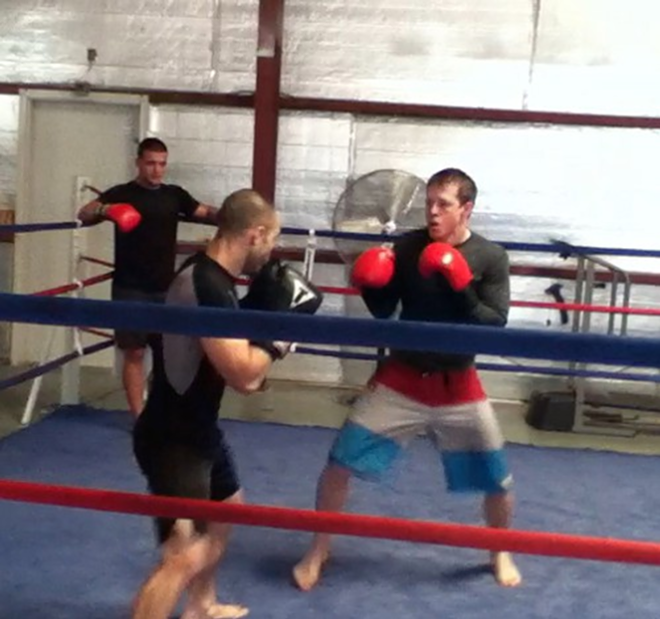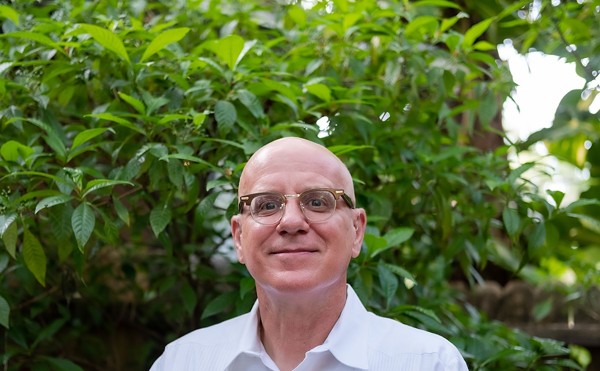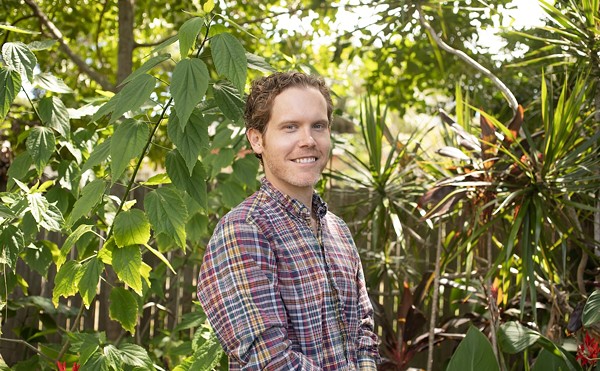- Shawn Alff
- Shawn Alff sparring
Something in my ankle snapped.
"Are you okay?" John asked, releasing my leg from a heel hook.
I wasn't sure how badly I was injured, but I kept grappling. If mixed martial arts had taught me anything, it was to disregard the warning signs that serious injury was imminent.
I joined an MMA gym on my 30th birthday. I was looking for a workout to replace the empty rituals of running and weightlifting. The MMA gym I joined occupied a sweltering warehouse in an industrial park. Each week new recruits paid their monthly dues, only to quit the first time they were punched in the face or choked out.
This was the rational response to fighting. Those who kept coming back to train were anomalies. Most had criminal records. A few had lost athletic scholarships to college. Some were road workers. Others were lawyers. But none of the regulars viewed fight training as a way to stay in shape. For them, it was a way of life.
I trained in MMA three days a week for a year. I got good enough that I could have taken an amateur fight without embarrassing myself. I had come a long way since my first practice when I vomited in the parking lot twice. While the training didn't get me in the best physical shape of my life, it did make me mentally tougher than I had ever been.
I began to like the occasional black eyes and my budding cauliflower ears. I even started to like being a glorified punching bag for serious fighters; each defeat instilled in me the confidence that comes with facing your fears head-on, getting knocked on your ass, and getting back up for more.
Through most of my training I worried about superficial problems, like getting a tooth knocked out, or catching the staph and ringworm that plagued the gym. What I tried not to think about, what few talked about, was how we were all just one wrong move away from serious injury.
Our coach had chronic back problems from grappling. One pro fighter spent the better part of the year recovering from knee surgery. A gym regular had injured his back so severely that he would never walk normally again, let alone grapple. An older fighter was out for months with a serious wrist injury and what his doctor called the worst case of ringworm he had ever seen. My main grappling partner had to stop sparring after a second surgery to fix his detached retinas. And yet, with all these glaring reminders of the sport's dangers, the regulars kept training.
My ankle healed after wearing a brace for several months during practice. The only other semi-serious injury I sustained was a cracked rib. John, the newbie who snapped my ankle, didn't fair as well. He quit the gym when he blew out his knee on a lock similar to the heel hook he caught me in.
Leg locks are particularly dangerous because they don't hurt until something snaps. Fighters regularly sustain serious injuries when they refuse to tap during such holds, to forsake the tough ideals MMA fosters in them. This is why fight training will never be a mainstream workout. In order for fighters to build their mental toughness and their physical bodies, they must constantly put their health on the line.
Follow Alfie on Twitter , Facebook , or at shawnalff.com



















